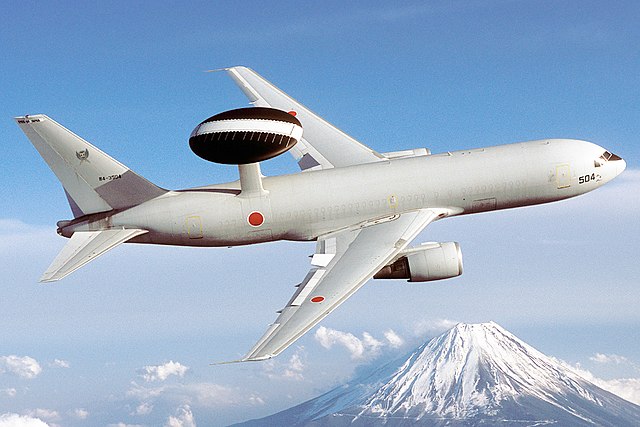Airborne early warning and control
An airborne early warning and control (AEW&C) system is an airborne radar early warning system designed to detect aircraft, ships, vehicles, missiles and other incoming projectiles at long ranges, as well as performing command and control of the battlespace in aerial engagements by informing and directing friendly fighter and attack aircraft. AEW&C units are also used to carry out aerial surveillance over ground and maritime targets, and frequently perform battle management command and control (BMC2). When used at altitude, the radar system on AEW&C aircraft allows the operators to detect, track and prioritize targets and identify friendly aircraft from hostile ones in real-time and from much farther away than ground-based radars. Like ground-based radars, AEW&C systems can be detected and targeted by opposing forces, but due to aircraft mobility and extended sensor range, they are much less vulnerable to counter-attacks than ground systems.

A Royal Air Force Boeing E-3 Sentry over North Yorkshire
Wellington Ic "Air Controlled Interception" showing rotating radar antenna
Lockheed EC-121M one of the first AEW aircraft
E-767 of the Japan Air Self Defense Force
An early warning system is a warning system that can be implemented as a chain of information communication systems and comprises sensors, event detection and decision subsystems for early identification of hazards. They work together to forecast and signal disturbances that adversely affect the stability of the physical world, providing time for the response system to prepare for the adverse event and to minimize its impact.
A HSS Engineering TWS 295 electronic sirens warning Civil Defense siren.





